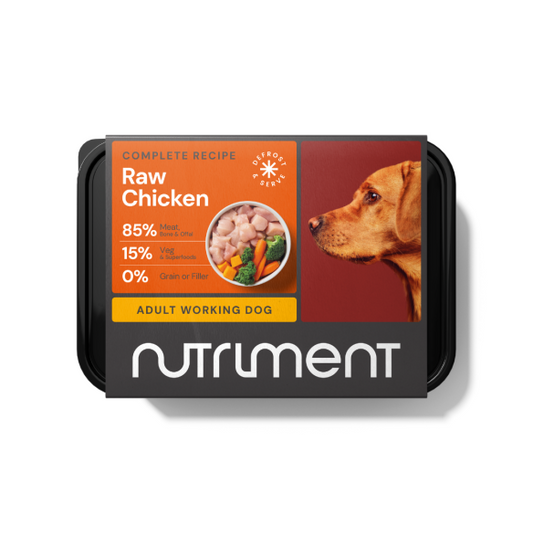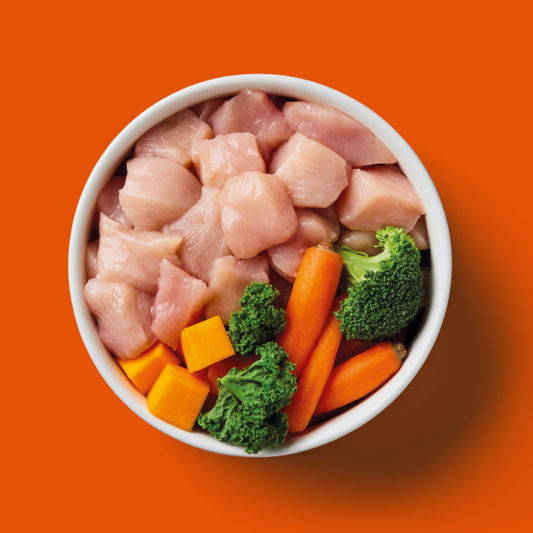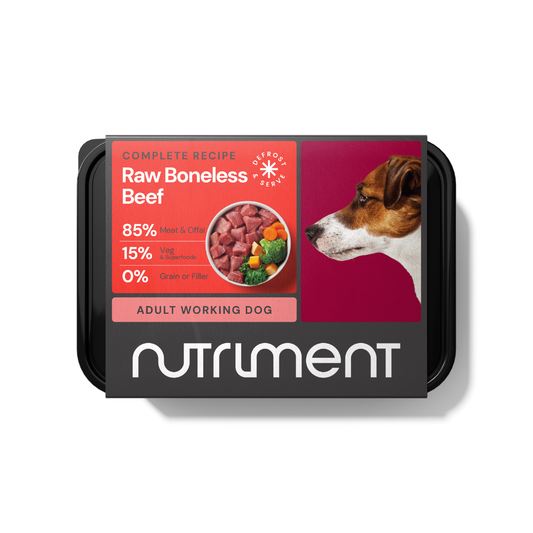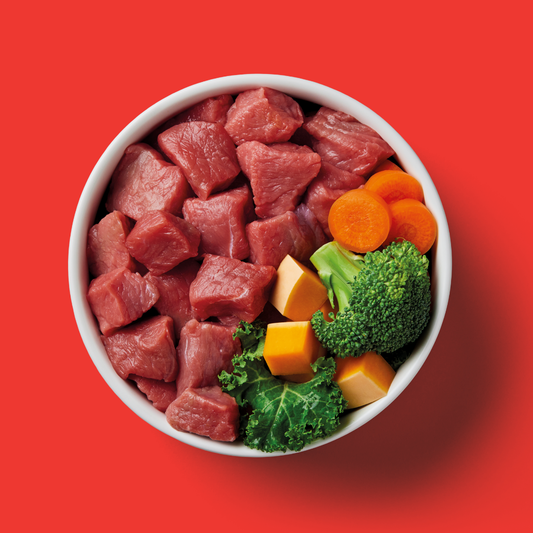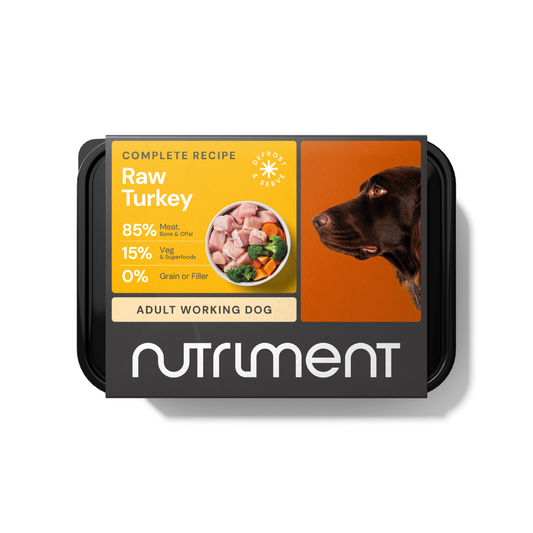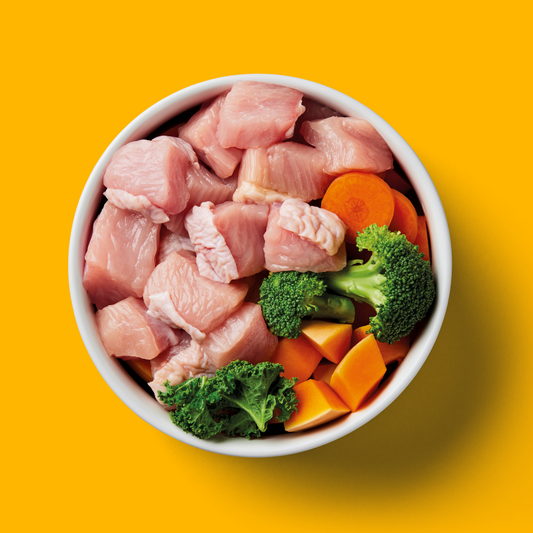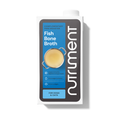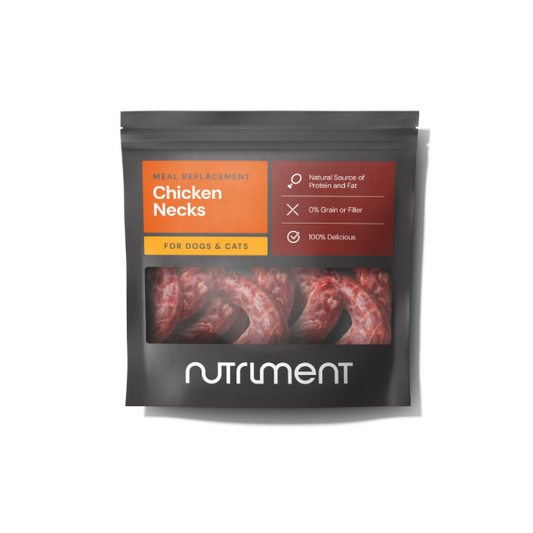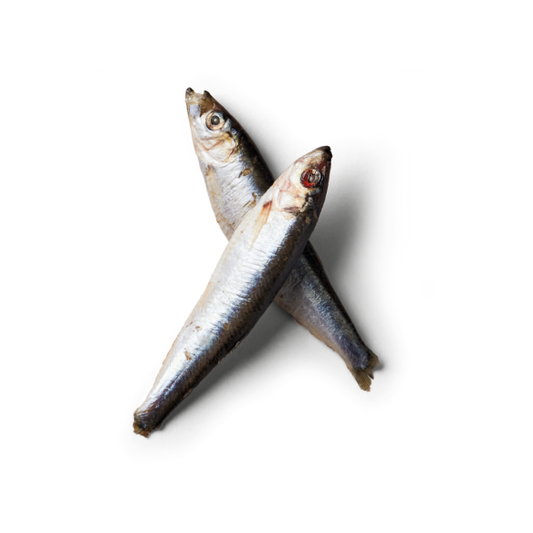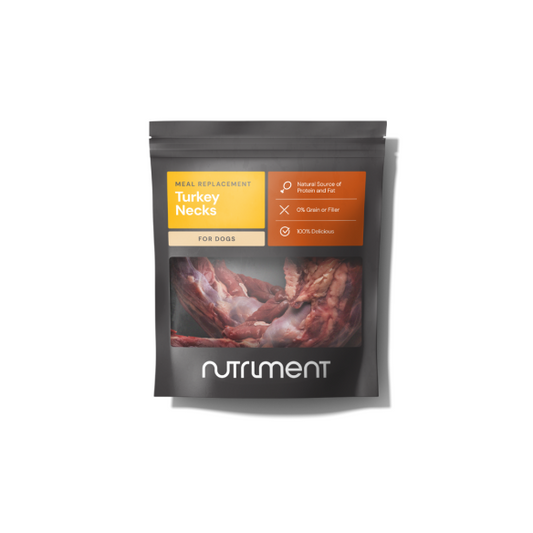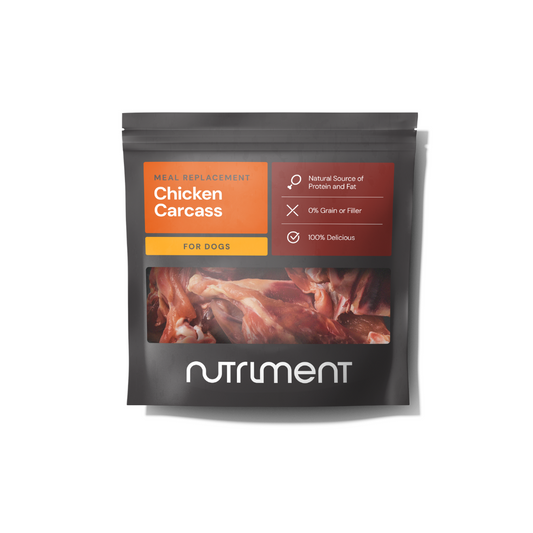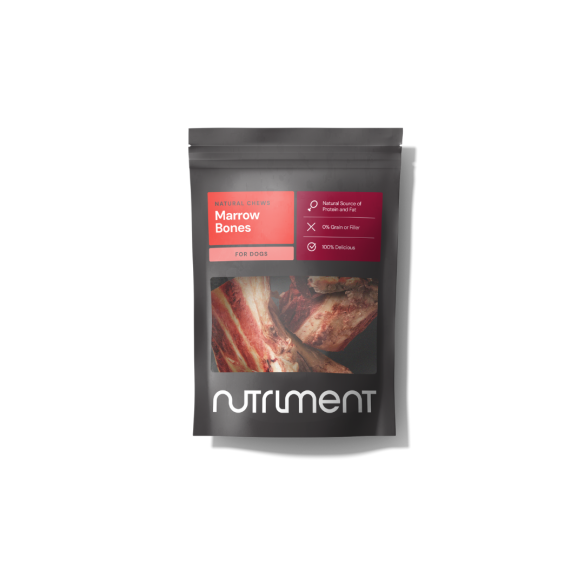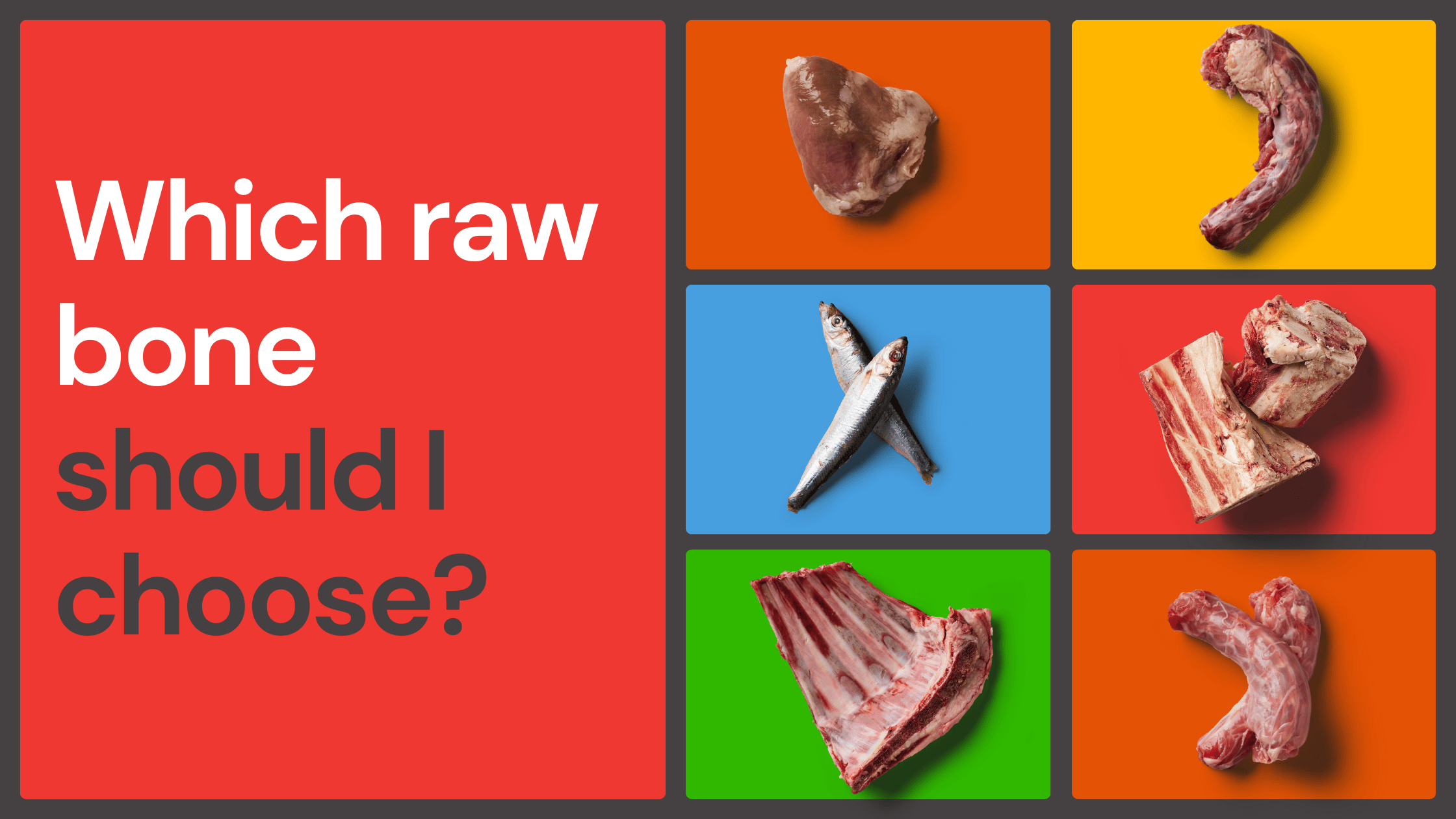
Raw meaty bones are often one of the scariest things to introduce when you start on a raw and fresh diet, it gives some trepidation however the benefits do outweigh the concern, and you do overcome it!
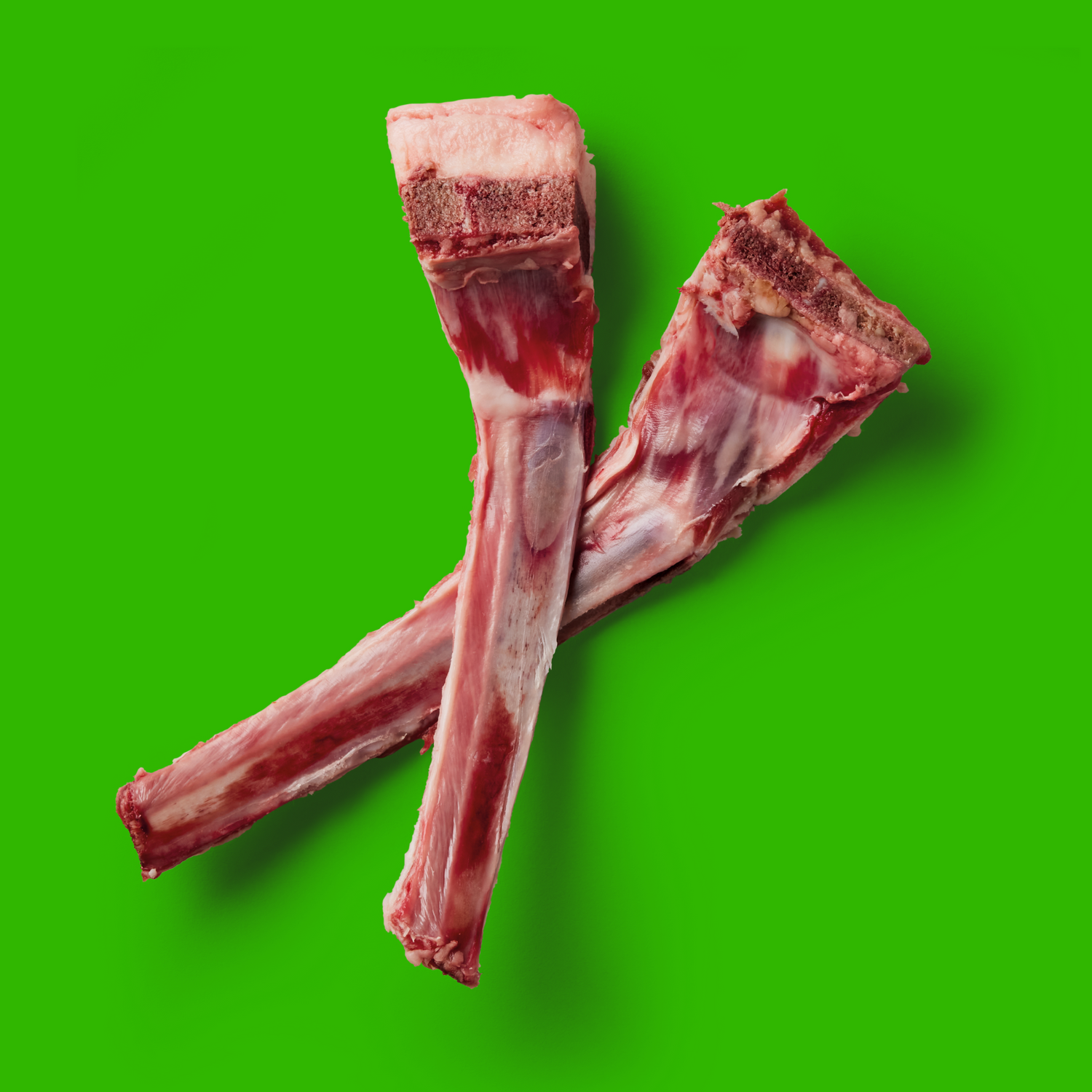
Bone is essential in a diet, whether served as a bone or ground into a mince – our dogs and cats NEED it, however, it’s not a huge part of the diet – only around 10% of bone is needed. If you go over that your dog might get constipated.
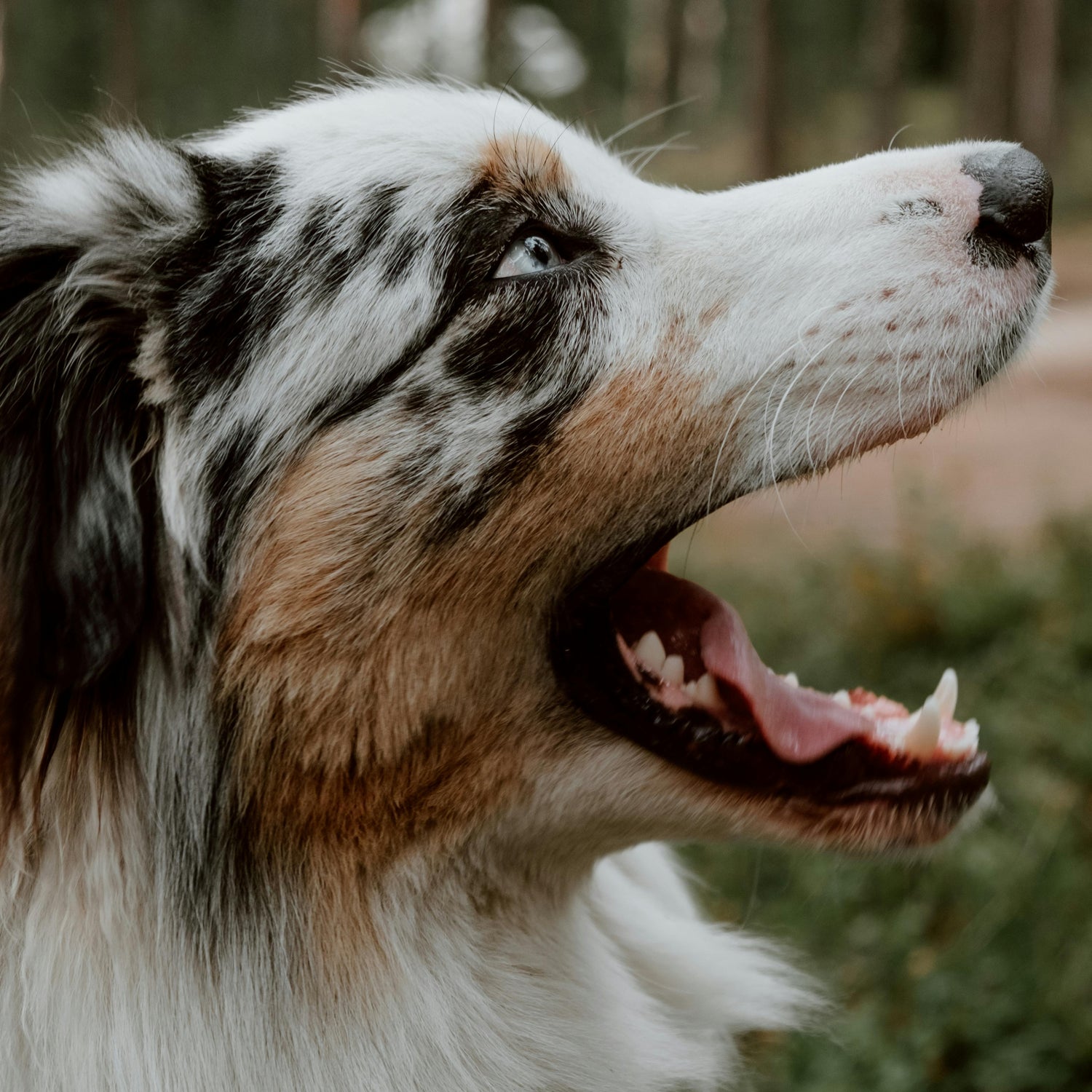
Dogs are blessed with the perfect “tools” to deal with meaty bones, they’ve very strong jaws and enormous teeth, such as the premolars, carnassials and the molars, these strong teeth are made to crush and break a bone. Besides this a dog’s stomach is highly acidic meaning it is quite capable to break down bone.
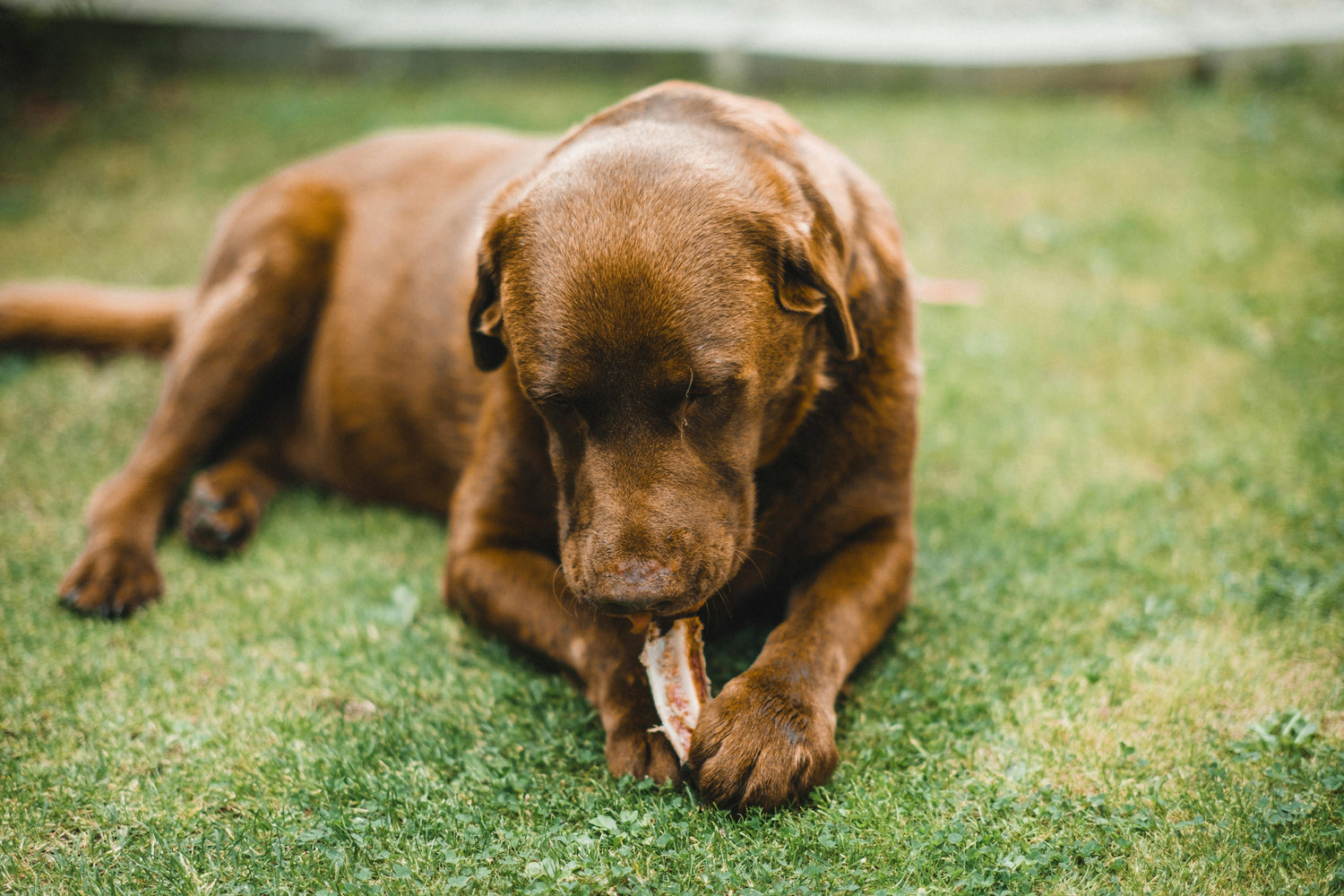
The benefits of dogs chomping on bones are numerous, firstly bones keep the teeth clean and they remove plaque off the teeth as well as keeping the gums healthy. Clean teeth are extremely important for overall health. Secondly, chewing releases endorphins in the brain such as dopamine, dopamine often called a happy chemical. This is also the reason why if you have a stressy dog giving them a good meaty bone work-out might mean they feel more contented. Lastly figuring out how to eat bones offers mental stimulation as well as great exercise.
To feed bones
Raw bones to feed tend to be soft raw bones and non weight-bearing, no legs or knuckles of large animals.
These are bones your dog can eat with little issue…
However when you have just started on a raw and fresh diet, then it’s best to initially use premade formulas so the stomach can adjust its acidity (back to normal) which will be needed for the breakdown of bone. When it’s ground into the mince is extremely easy for dogs to digest, after 2 weeks of feeding this you might want to start exploring the natural toothbrush aka meaty bone option.
If you are feeding raw, meaty bones, then feed something boneless before and after and observe the poo – make sure it’s not too hard or crumbly or white. If the poo is soft you know your dog can have a bit more bone.
Which frozen bones and treats are best for my dog?
Cats, Puppies & Small Dogs
To Feed Bones & Treats
-
-
-
-
Regular price £1.99Regular price£2.84 / kg Unit price / per
Recreational bones
Recreational bones are things like marrow bones, ribs of big animals – these bones by nature are extremely hard and dense making them perfect for occasional treats.
What is meant with recreational is that you give the bone to be slightly chewed to get the marrow out, to let your dog strip the meat of it and then discard the actual bone once the pleasure has been had.
Recreational bones can give a great workout and offer mental stimulation. Marrow bones have the additional benefit of it being a true powerhouse of nutrition.
Always opt for LARGE recreational bones, if the bone is larger than your dog’s head you will know it cannot be swallowed.
Remember these are bones not for eating to chew a little.
Marrow Bones (Pack of 2)
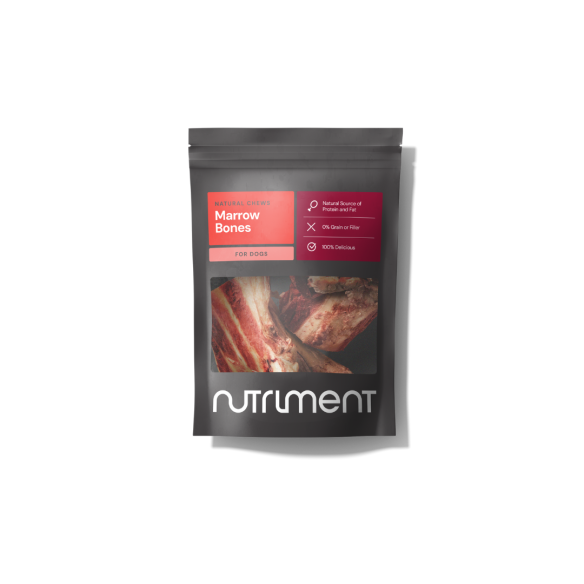
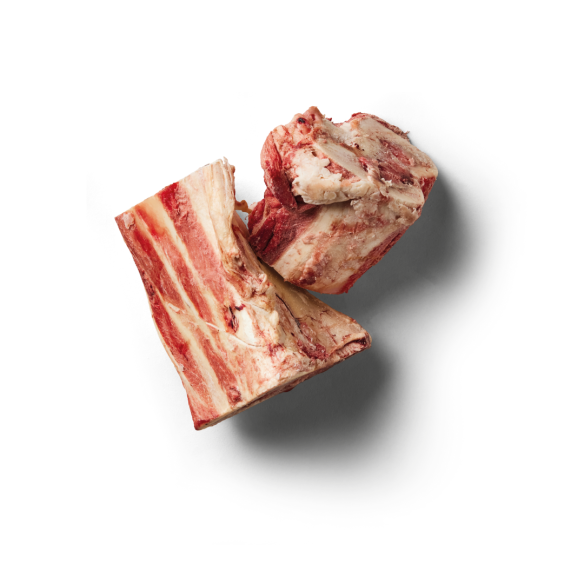
Top tips for feeding bones!
- Always supervise your dog when feeding bones.
- Never feed cooked or smoked bones, these are brittle, can splinter and can cause real damage.
- If you have a gulper, try initially to hand-feed or feed it frozen. Listen and look how many crunches like that will tell you if your dog is a gulper or is just extremely skilled.
- If you have multiple dogs consider that bones can be a very high value so make sure you can let them have their bones in peace and with some distance of each other.
- Look at the size of bone you are feeding if you have a large dog, then small bones can be a choking hazard.
- Start small, don’t start with an enormous bone as it would be too much bone for your dog to handle.
- Once they are used to eating bones don’t be surprised if they go down quick, it’s quite normal for a chicken neck to receive 2 crunches and it’s gone by a medium-sized dog.
